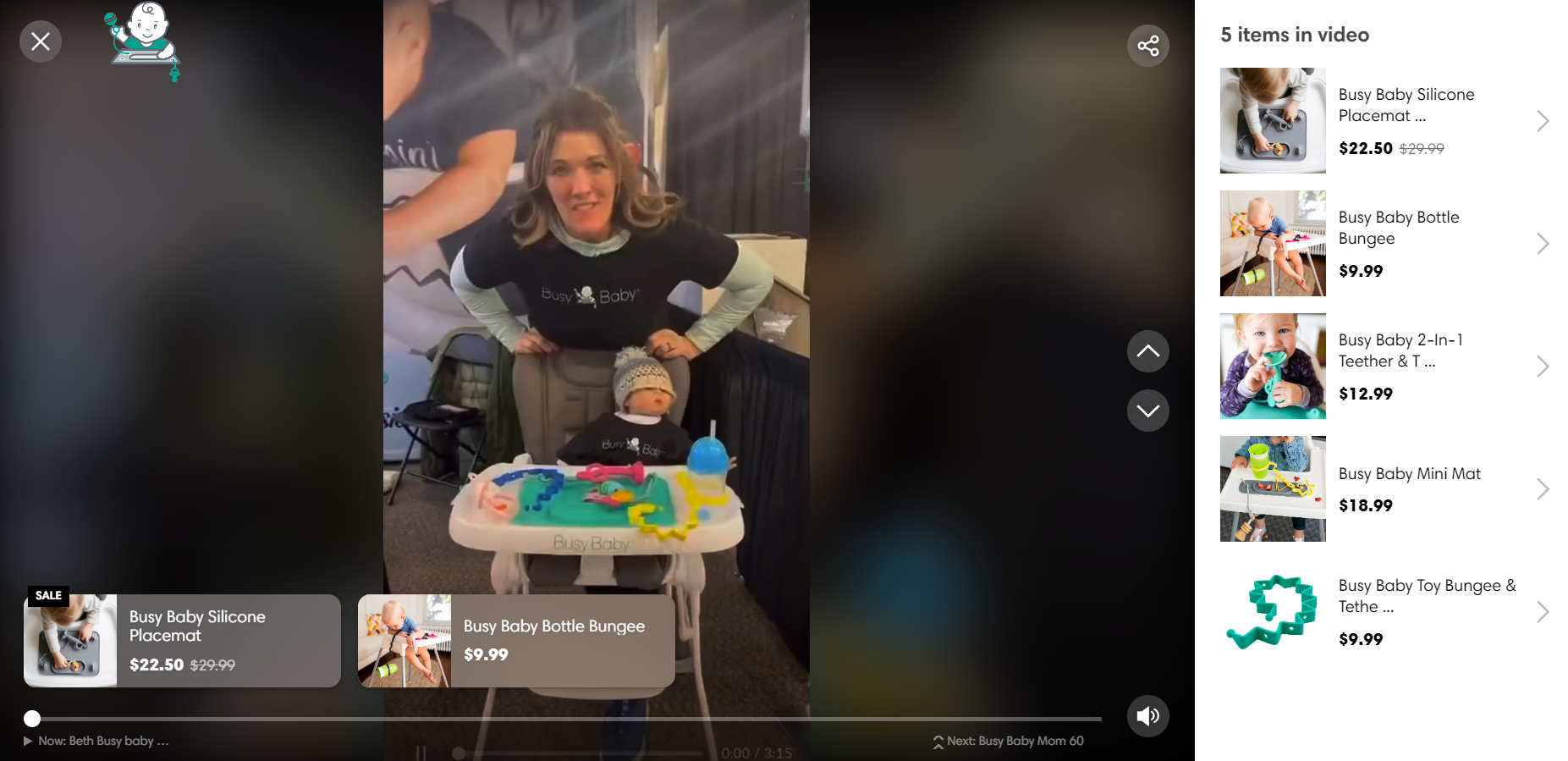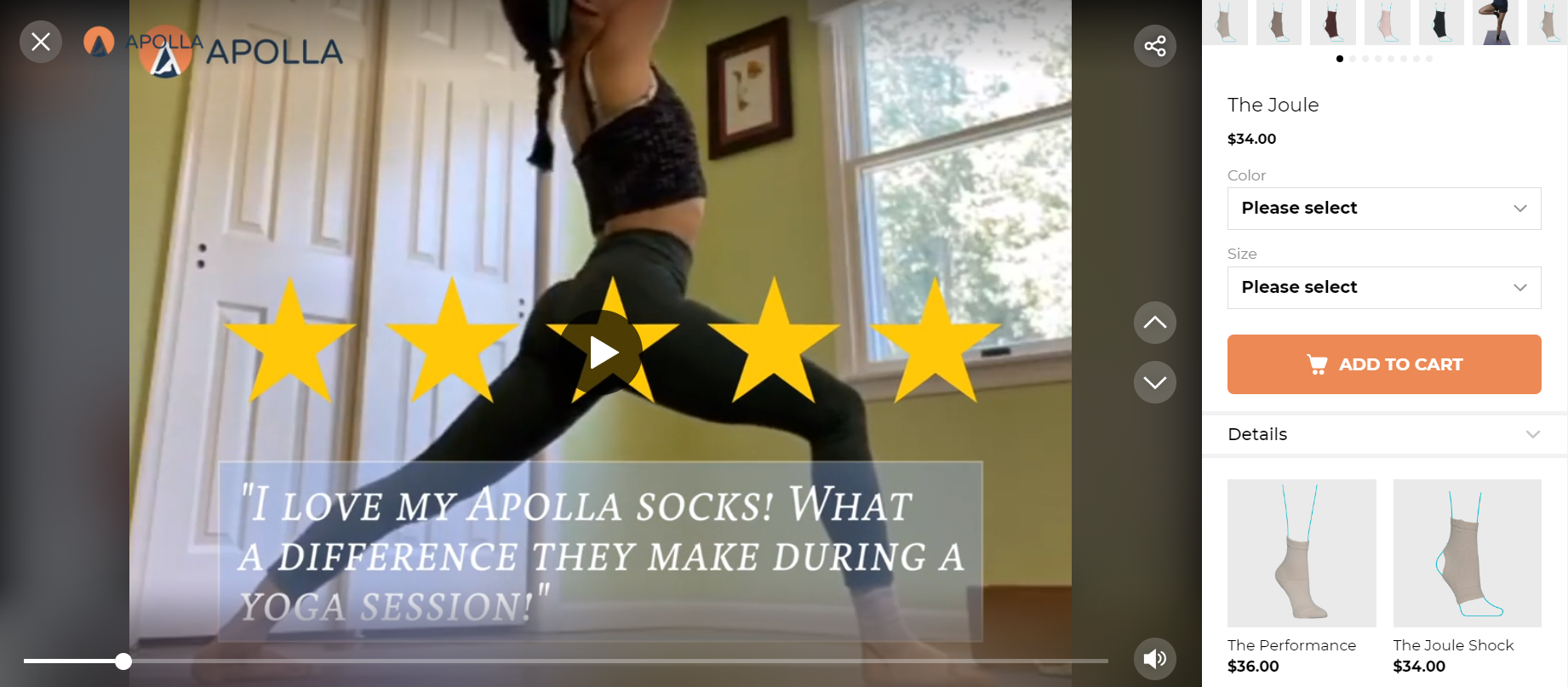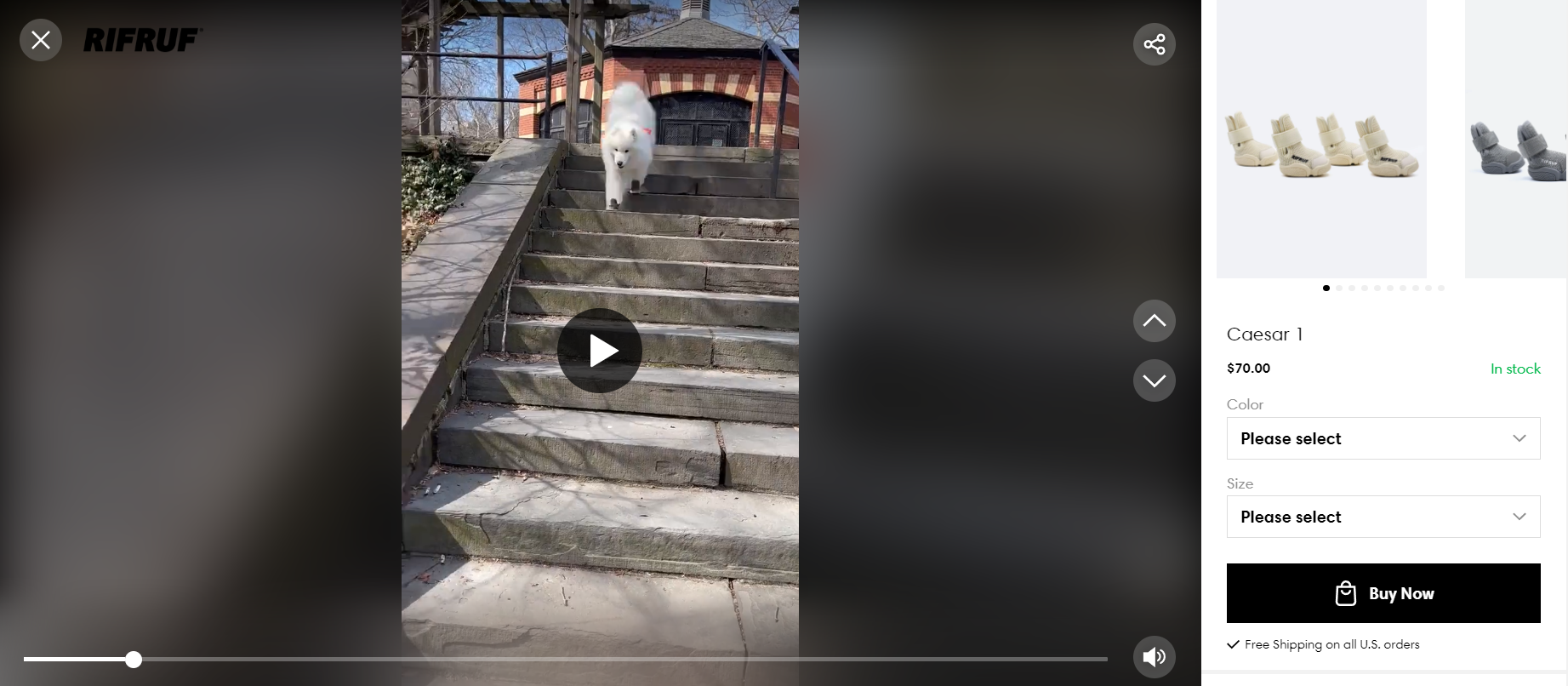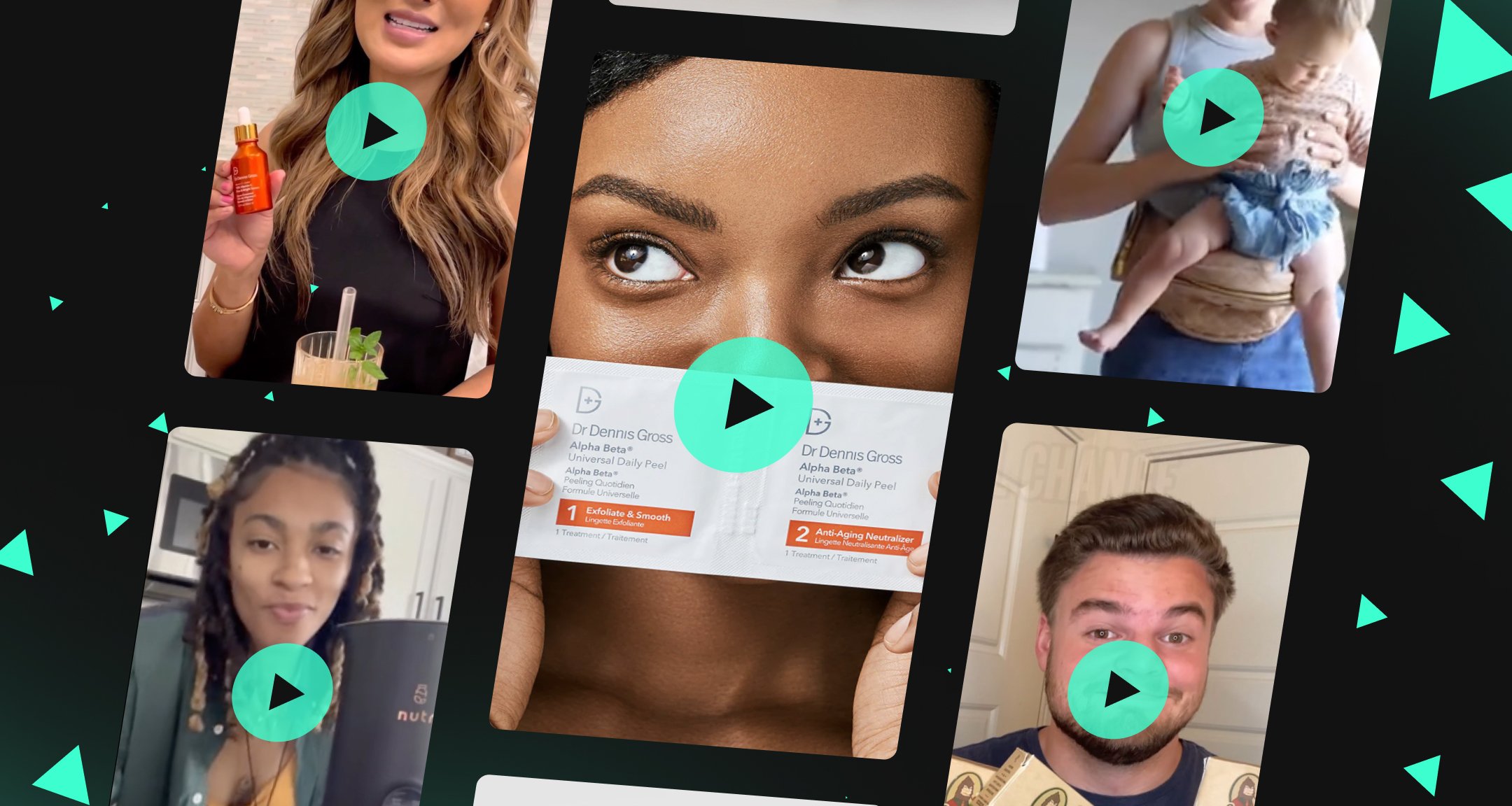Share
Creating a product video always starts with an idea. What is the best way to position your product? How can you make it stand out? What angle should your video take?
There are so many possibilities—but you need just one. And that’s why you’re here. We’ve compiled a list of 29 product video ideas to help you figure out which one to use for your next video.
1. Launch a product
Let’s state the obvious: a product video is the perfect strategy for your product launch. Tell the world about your brand new product—whether it’s your company’s first product launch or you’re simply adding another product to your offerings.
Here’s a great example of cookware brand Hexclad’s initial product launch:
By showcasing an expert in the cooking world using the product and talking about its features—as well as incorporating mouth-watering footage—Hexclad has put together a product video that’s going to stand out and work perfectly as a part of the brand’s launch.
2. Announce a new collection
Are you putting out an entirely new collection? This might be a new line of clothing for the season, a new color, a new set of complementary products, what have you. Creating a video to announce a new collection of products is a great way to build hype and spread the word.
Here’s an example from fitness company Bala, sharing its new Floor Series:
The company separates its products on its website by category, with one being “Floor,” for yoga, pilates, barre, and the like. Creating a cohesive video for this collection is a great product video idea as it’ll appeal to people interested in that type of exercise, and they’re likely to buy more than a single product.
3. Make it shoppable
Make it as easy as possible for potential customers to buy your products. As in, as soon as they’ve seen a product they want in your video.
You can do that by making your videos shoppable. This means you tag your products in the video so your viewers can make a purchase while they watch. Some social media platforms—like Facebook, Instagram, and TikTok—make this possible.
But you can also use a tool like Videowise to help. This video below is one example of a shoppable video that helped Ava Estell generate $743k.
Create your own shoppable videos that you can share on social media, in blog posts, on product pages, or on other landing pages on your website.
4. Create a video catalog
Show off multiple products in a single video with a product video catalog. With this, you can showcase a number of different—but compatible—products, how they can be used, and how they can improve your customer’s day-to-day.
Here’s an example of what that might look like from Busy Baby Mat:

The founder is walking viewers through all of her products, how they work together, and how they can make taking your baby out in public much easier. Plus, the video is shoppable, meaning viewers can buy several of the featured products all at once.
5. Share a testimonial
Let your audience know what existing customers have said about your product. This is a form of social proof, a psychological phenomenon where people trust other people’s opinions and are much more likely to make a purchase if they know others have had a good experience.
There are a few ways you can incorporate testimonials into your product videos. You can interview customers on camera to include in your video. You can use screenshots from review sites. Or you can pull quotes from review sites and social media accounts.
Apple decided to go more than one route with its product video for the new MacBook Pro and Mac mini:
The video kicks off with quotes from Twitter users, then moves on to user-generated videos of real Apple users that the company has compiled into a compelling introduction for its 18-minute product introduction video.
While most product videos aren’t nearly 20 minutes, the first 50 seconds makes up the perfect testimonial product video. And Apple could easily crop that section out and use it as an ad or social media post all on its own.
6. Tell a story
One great product video idea is to tell a story. Talk about how your brand got its start, what your product can do for people, how your customers feel about your product, and more. Video is the perfect medium for telling a story.
Here’s an example of how prenatal vitamin company Ritual used video to help its customers tell their stories about pregnancy:
This type of video is powerful because it creates an emotional appeal with the brand’s target audience. Emotion sells products, especially if your brand can create an emotional connection with your potential customers.
7. Promote on social media
Social media should be a major part of your video content marketing strategy. Every social media platform allows—nay, encourages—sharing video content as well, so take advantage of that.
Here’s an example from Ruggable:
It’s a user-generated video (more on that shortly), and the brand has tagged the creator in the caption. By sharing it on your social media channels, Ruggable is able to reach a wider audience.
Instagram is also a platform that enables brands to create shoppable video content. Brands can tag products from their social media catalogs, making it easy for customers to shop without ever leaving Instagram.
8. Walk viewers through a tutorial
Show customers how to use your product. That’s going to be a great way to make a sale because they’re going to see your product, immediately understand how to use it—and how easy it is to use it—and feel confident in making that purchase.
Here’s an example from a hydroponic gardening system Gardyn created its own tutorial video:
If you have a product that some customers might feel is more complicated, putting together an easy-to-understand tutorial can be a great way to help them feel more comfortable with their purchase.
9. Take advantage of user-generated content
User-generated content (UGC) is content that has been created by your customers. If you have customers creating ugc video content talking about your product or sharing their usage of your product, asking for permission to use that footage can be a great marketing strategy.
Here’s a great example of this from Apolla Performance Wear—including both user-generated footage and positive reviews on the product:

As you grow your user base, more and more customers are likely to share your product online. And even if you aren’t to that point, working with influencers can be a great way to gather user-generated content for your video marketing strategy.
10. Highlight your product’s value
Showcase everything your product has to offer. This can include features, its use, what makes it convenient for customers, and more.
This Under Armour video is a great example of how to showcase your product’s value—especially in action.
The brand took video footage of several people using the pair of shoes so that potential customers could see how easy and convenient they are and want to make a purchase for themselves.
Find ways to show off the value of your product(s) in your product videos to help increase sales and conversions.
11. Share how your product is made
Let potential customers in on how your product is made. This can go one of two ways. You can record video footage that takes viewers through the actual creation process. Or you can take a page out of Casper’s book.
Using x-ray animation to showcase the different layers of the mattress helps potential customers get an idea of what goes into the product, helping them better understand what they’re buying.
Even if you don’t walk customers through the creation process, letting them know the ingredients or moving parts of the product can help get them interested in making that final purchase.
12. Compare your product to the competition
What does your product do that your competition’s product doesn’t do? One tried-and-true product video idea is a comparison video that showcases how your products hold up against your competitors.
Think back to the old toilet paper and paper towel commercials. Classic, right? If possible, create a side-by-side projection that shows how your product is superior. It’s a great way to make a sale and prove that you outrank your competitors.
13. Feature holiday festivities
Do you have special holiday or seasonal products? Use those in your seasonal videos. Switching up your video content marketing ideas to match relevant holidays or seasons is a great way to have fun with your marketing and meet customers where they’re shopping.
For example, this fun, short product video from Jiggy Puzzles is a great Valentine’s Day gift idea—a puzzle card is a low-budget gift with which the recipient can have fun.
But this doesn’t only work for small gifts. Large-scale products should also focus some of their promo videos around holidays—especially gift-giving holidays. Target those who might be shopping for gifts for friends, family, and loved ones with your holiday videos.
14. Create a time-lapse video
A time-lapse video is one that takes footage shot in real time and speeds it up so that it appears to go much more quickly. Here’s an example of how you might use this type of video in your product video from AeroGarden.
They’ve also created a tutorial video similar to the example from a similar company Gardyn we showcased earlier. But here, they also generate excitement in viewers as they speed up the results from the product via time-lapse.
It helps potential customers see what can come from the use of their product and satisfies that need for instant gratification—even if the results won’t actually happen that quickly.
15. Use photos in your video
Just because you’re creating a video doesn’t mean you have to use video footage. Incorporating photos can be a great promo video idea. Simply take some of your high-quality product photos, add background music, and create an engaging photo slideshow.
Here’s an example of what this might look like:
It’s simple but effective—and relatively low-cost. You can even use your smartphone or any other technology on hand to gather photos of your products in use, then use a quick video editing app to put them together.
16. Record an unboxing video
Unboxing videos are wildly popular. These types of videos involve a customer getting their package and opening it up on camera. An unboxing product video works well in an influencer partnership, but that’s not the only way to make this work.
We have another example from AeroGarden below, showing someone opening up their hydroponic garden package and putting it all together:
Influencer unboxing videos often gush more about the product, while the above lets the product and its parts steal the show. Either way can be effective—but if you’re working with influencers, consider requesting an unboxing video that you can use in future product video marketing.
17. Use animation
Another product video idea is to create an animated video. This requires partnering with an animation expert who can create the characters or other animated effects and make them move. But it can be a fun way to promote your product.
Take a look at what this might look like from mattress company Purple.
Camels and other animals aren’t buying the product (obviously). But by creating an animation joking about weirdly shaped animals (i.e., camels and their humps) finding comfort in a Purple mattress, it can showcase how versatile the product is.
Get creative with your animated videos. When it comes to this type of video, the possibilities are literally endless because you don’t have to rely only on what you can film.
18. Showcase a before and after
What can your product do? What does it help with? What can it help customers accomplish? These are all important factors in making a sale—and you can easily showcase them with a before and after.
With this product video idea, you’ll showcase a customer’s life before the product before then switching to what things are like after they’ve bought your product. Get a bit creative with it, or be more realistic, depending on your brand voice and messaging.
The point is to prove that things are better with your product. But if you have real-life footage of a before and after, your point will be even more compelling.
19. Make viewers laugh
Humor sells. Use that to your advantage by making your product video viewers laugh. Don’t make a joke of your product—instead, create a humorous storyline that still features your product as a solution.
Here’s a great example of this from Old Spice:
They’re almost making fun of themselves—but in a way that still positions their product in a good light. The product is still the solution here, even if the overall vibe of the video is funny rather than serious or realistic.
20. Focus on pain points
What pain points does your product solve? How is your product making your customers’ lives easier? What specific solutions does your product help with? Hone in on the answer to all of those questions by focusing on pain points within your promo video.
Take this video from Easyplant as an example:
What is a pain point for many plant owners? Having to water plants constantly—and either over- or underwatering their plants to the point where they die.
This resonates with Easyplant’s target audience. So they present their solution: self-watering plant pots. By focusing on the pain points and then presenting their product as an easy solution, Easyplant has created a compelling product video that’s going to get clicks and sales.
Consider how you can do the same. Start by honing in on the most basic pain points—and how your product can virtually eliminate them. Then talk about them on camera.
21. Keep it short
Short videos can still be wildly effective videos. A product video can be upwards of 3-5 minutes—but it can also be a quick 15 seconds. It depends on which promo video ideas you choose to use and how you want to position your product.
RIFRUF created a compelling product video that’s only five seconds long—but look at this majestic queen walk along in her RIFRUF shoes:

And any dog owner is going to agree—and then want to immediately click “Add to Cart” in this shoppable video.
You don’t need a million words to describe and sell your product. A quick 5-30 second video can do it all if you have the proper footage and the right angle.
22. Get creative with the audio
Using the right audio is a major trend, especially on short-form video platforms like Instagram and TikTok. However, these video and audio trends can translate into your promotional videos as well, even if you host them on your website.
Take a look at this video from Art Sabers.
@artsabers Obi Wan Kenobi Lightsaber 🔥🦾 #revangeofthesith #obiwankenobi #unboxing #gamer #neopixel #kenobiiiiiiiiiiiii ♬ original sound - ARTSABERS
It uses a trending audio clip from TikTok to help make an effective video that’s going to grab the audience’s attention.
Pay attention to ongoing trends, especially on short-form video sites like TikTok, Instagram Reels, and YouTube Shorts. Using one of these trending audio clips can immediately reel your viewers in, regardless of your video footage.
Then, as you introduce your product, they’ll become even more interested. If people are familiar with these trending audio clips, they’re much more likely to stick around and watch more of your video. Take advantage of this tactic, especially if you’re sharing your product videos on social media.
23. Sell a lifestyle
Rather than selling your product, one effective tactic to use in your marketing video is to sell a lifestyle. What kind of lifestyle does your product represent?
Outdoorsy brands like Yeti are great at this, as shown in the video below.
While the video features various products, it also highlights a story—and that story pushes the outdoorsy lifestyle throughout. But it also focuses on how the Yeti brand and products can help fulfill that lifestyle.
By showcasing the brand’s cooler, thermos, and other products in the narrator’s lifestyle, Yeti is making a push that in order to really live this life, you need their products. It’s a smart tactic and can be done in a number of different ways.
What kind of lifestyle do your products represent? How can you get your viewer to associate your products with the type of life they envision for themselves? Consider how you can get your target audience to immerse themselves in their ideal lifestyle through the use of your products.
24. Go behind-the-scenes
Behind-the-scenes content is a great way to sell your product. Transparency with customers is important—and going behind-the-scenes into how your business works, how products are made, or how products make it to the customer is a great way to build trust.
This video shows a great example of a behind-the-scenes video from Bloomscape:
It’s a short video—only 15 seconds long—, but it quickly walks viewers through what a plant (one of Bloomscape’s products) goes through before it gets to the end customer.
It helps build a connection between the customer and the product they’re buying. When you create product videos that you want to resonate with your customer, go behind-the-scenes and showcase the entire process. Creation, packaging, shipping, and more.
25. Feature a celebrity
While you might be thinking that only top-tier brands get to feature celebrities, that’s not necessarily true. Many influencers on social media platforms reach the level of celebrity that actors, actresses, singers, and other artists do—and they can be much more affordable to work with.
So if you can, consider featuring a celebrity in your marketing videos. Fans of that celebrity or influencer will trust your brand much more readily, and it can help build even more social proof.
Singer-songwriter Chloe Bailey was featured in this product video by Beats by Dre, helping to facilitate a relationship between her fans and the headphones brand.
Working with celebrities and influencers can be a smart way to widen your audience and reach more customers—especially if that celebrity or influencer is close to your industry. For example, it makes sense for a singer to be featured in an audio-related ad.
Consider which types of influencers or celebrities would make the most sense for your brand or a brand in your industry to work with. Start reaching out to their PR teams to get rates and see who you might reasonably be able to partner with.
26. Use stop-motion
Stop-motion is a type of video content that uses images in quick succession of each other to create a slow-moving video effect. It can be a fun way to create videos that aren’t using live footage—but keep in mind that editing a stop-motion video can take a lot of time.
Here’s an example of a basic stop-motion video:
These can be as simple as the example above or as complex as a full 3-minute video filled with stop-motion photos or animation. Get creative with your brand’s video content. Stop-motion videos can be a great way to grab attention without needing a huge budget—or a celebrity feature.
27. Cater to your target audience
Who is your target audience? Who is most likely to buy your product? Keep that person front and center when brainstorming product video ideas. They’re the only person/people you should be catering your video content too.
Here’s a great example from Man Crate—a gift box for men:
They’ve kept their brand messaging simple—focusing only on people trying to buy gifts for men and those who might receive them. This video ad appeals to the customer—the gift buyer—and the recipient—the man—helping to increase sales. Men interested in the product can share it with those who might be buying them gifts. And the gift buyers will instantly be interested in a quick and easy gift.
Creating a buyer persona is a great way to understand who your target audience is, what their pain points are, and what their buying motivations are. This way, you can create video content that will easily appeal to them and make them want to buy your product.
28. Share an expert’s opinion
Find an expert in your industry that you can interview for your product videos. This will help position your brand as more of an authority in your field, building trust and value.
Here’s an example of what that might look like from SISU Mouthguards.
The brand has an actual oral doctor speaking to the camera. This expert also happens to be the inventor of the product, but his credentials speak for themselves.
Reach out to others in your industry who can vouch for your product. This type of endorsement is extremely valuable and can set your brand apart from your competitors.
The expert you choose will vary based on your industry. In an instance like SISU Mouthguards, having a medical professional speak to the product and why it works so well as a mouthguard for contact sports like lacrosse makes potential customers feel more secure about making the purchase.
In other instances, you might simply try to find an influencer or well-known figure in your industry to speak on your product and why people should buy from your brand versus others. Getting an expert opinion—or, better yet, endorsement—can help increase sales and better position your brand as a go-to in your industry.
29. Announce a special edition line
Want to increase sales? Launch a special edition product line. Take a page out of Dyson’s book and simply recreate existing products in a limited-edition color line. Check out the brand’s video announcing this collection below:
This product launch type differs from your typical product or collection because it’s limited. By drawing attention to the product line’s exclusivity, you will immediately incentivize potential customers to get in on the special edition line before it’s gone.
You might choose to launch special colors, patterns, or something else basic like that. Or there might be another way to make this collection special. But use a product video to showcase a limited product line and start generating sales.
Use one of these product video ideas for your next video
Start gathering your product video ideas from this list. But keep one important idea in mind—shoppable videos. Videowise can help. If you run a Shopify eCommerce store, get in touch about shoppable video marketing and how it can revolutionize your sales.
Share


.jpg?width=810&height=428&name=Image%20for%20all%20the%20blog%20posts%20(1).jpg)


.jpg?width=420&height=420&name=live%20shopping%20top%205%20fashion%20(1).jpg)